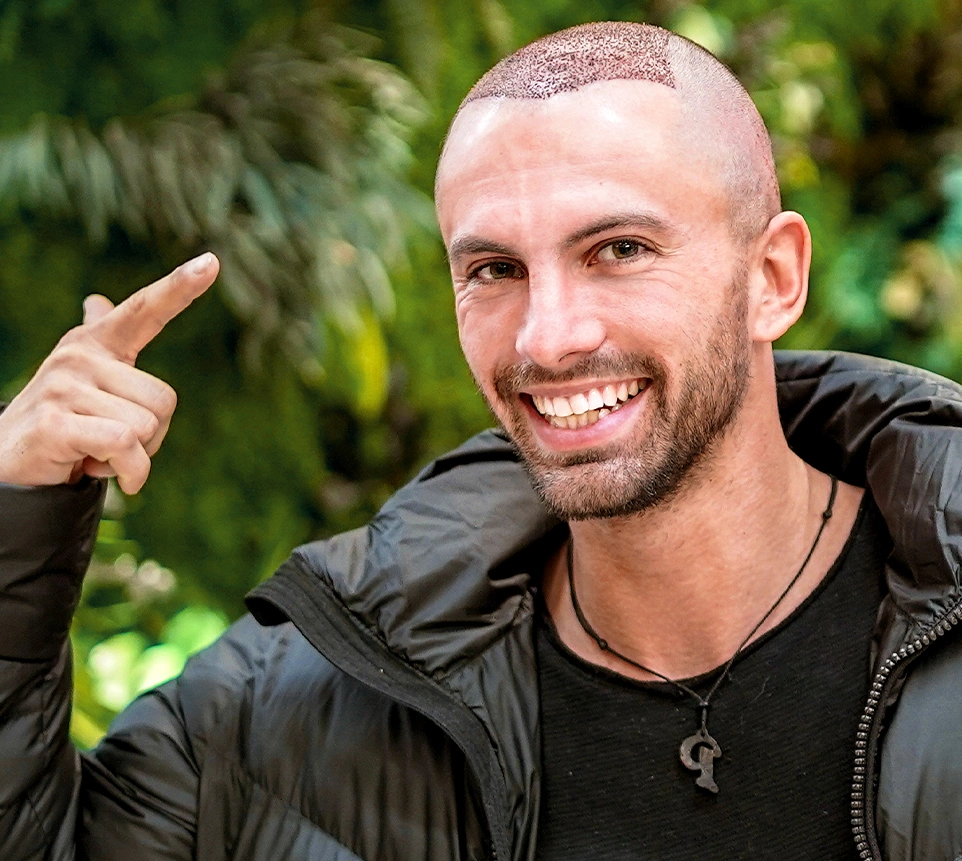So, you’ve probably heard about how popular Hair transplant in Turkey is these days, right? Whether you’re curious about the turkey hair transplant cost or want to learn more about hair transplant surgery turkey, we’ve got you covered. In this post, we’ll dive into one of the most misunderstood parts of the process: the shedding phase.
Shedding might sound intimidating, but it’s a perfectly normal and essential step in your hair transplant journey. When you understand that this phase is just part of the process, it becomes a lot less scary. Keep in mind that your hair will grow back—and often, even thicker and healthier than before.
Whether you’re exploring hair transplant surgery turkey, curious about the turkey hair transplant cost, or checking out the best hair transplant clinic in turkey, remember to educate yourself on every step of the journey—from day one of recovery all the way to the final reveal. Embrace the shedding phase for what it is: a temporary hurdle on your path to a full head of hair.
Hair Transplant in Turkey : Shedding Phase
So, what’s the deal with this “shedding phase” everyone keeps talking about? Basically, after a hair transplant, there’s a point where the newly transplanted hairs start to fall out. Sounds scary, I know. But trust me, it’s totally normal. This phase is often referred to as “shock loss,” and it happens because your scalp (and the newly placed follicles) have just gone through a bit of trauma. When you think about it, these follicles have been uprooted from one place and inserted into another. That’s a pretty big deal for them!
Why Does Shedding Happen?
The shedding phase is your body’s way of hitting the “reset” button. The follicles need time to settle into their new home, get used to the local blood supply, and gear up for proper hair growth. During that settling-in period, the hair shafts (the visible strands) often fall out. The root itself, however, remains beneath the skin, safe and sound. In time, new and healthier hair grows back to replace the ones that you lost.
Timing of the Shedding Phase
Generally, shedding starts around two to four weeks after your procedure. By the way, this doesn’t mean you’ll lose all the hair you’ve just transplanted overnight. For most people, the hair falls out gradually. You might notice your pillow or shower drain collecting more hair than usual. It can be a bit unnerving, but it’s important to remember that this part of the process is not permanent. Once the follicles have adjusted, fresh hair growth typically begins around the three- to four-month mark.
Shedding Phase vs. Permanent Loss: Don’t Freak Out!
It’s easy to panic when you start seeing strands come out after you’ve invested time, money, and a bit of hope into your transplant. But here’s the deal: The shedding phase is temporary. The follicles are still intact and will sprout new, healthier strands.
- Temporary Shedding: Think of it like leaves falling off a tree in autumn. The tree isn’t dead—it’s just preparing for fresh growth in the spring.
- Permanent Hair Loss: This is the hair you lost in the first place due to genetics, hormones, or other factors. The transplant is meant to address that.
By distinguishing between these two concepts, you’ll understand that this whole shedding thing is just another step on your journey to a fuller head of hair.
Shedding Phase and Its Relation to Hair Transplant in Turkey
You might be wondering, “Does the shedding phase differ if I get my hair transplant in Turkey?” Honestly, the fundamentals remain the same—wherever you get your procedure done. However, Turkey is renowned for cutting-edge techniques, experienced doctors, and comprehensive care packages that include detailed aftercare instructions. This means you’ll likely be well-informed about the shedding phase from the get-go. Clinics often provide you with specific guidelines to make the entire experience smoother, so you’ll know exactly what to expect—and how to handle it.
Does the Turkey Hair Transplant Cost Affect the Procedure’s Quality?
One of the main reasons people are drawn to hair transplant in Turkey is the affordability factor. The turkey hair transplant cost is famously lower compared to many Western countries. But does a lower cost mean lower quality? Not necessarily! In fact, many clinics have specialized teams and advanced tech to ensure you’re getting the best bang for your buck.
Remember, cost is just one part of the equation. Quality care involves:
- Expert medical staff
- State-of-the-art equipment
- Personalized pre- and post-op instructions
- Thorough follow-up and support
So if you’re considering a hair transplant surgery turkey, don’t assume that cheaper means worse. Do your research, read reviews, and ask for before-and-after photos (we’ll talk more about turkey hair transplant before and after results in a bit).
Different Techniques, Similar Shedding Phases
Whether you opt for dhi hair transplant turkey or fue hair transplant turkey, the shedding phase is pretty much guaranteed. Let’s briefly break down the two popular methods:
FUE (Follicular Unit Extraction)
- Individual follicles are extracted and then implanted into the recipient area.
- Minimally invasive and known for quicker recovery times.
- The technique behind fue hair transplant turkey typically leads to minimal scarring.
DHI (Direct Hair Implantation)
- Follicles are extracted and then directly implanted with a special pen-like tool.
- Offers more precision in terms of angle and placement.
- Often touted for minimizing the time follicles spend outside the scalp.
Both methods involve removing hair follicles from a donor area and placing them into the recipient area. Because of this, the process of shock loss or shedding remains similar for both. The primary difference is in how the follicles are extracted and implanted, not in the post-op shedding cycle.
The Emotional Rollercoaster of Shedding
Let’s be real: watching your newly transplanted hair fall out can be emotionally tough. You might feel:
- Frustration: “Why did I pay for something that’s falling out?!”
- Fear: “Is this really normal, or did something go wrong?”
- Impatience: “When will I see actual results?”
All these feelings are totally valid. But keep in mind:
- Shedding is just a phase.
- Your results will gradually become visible.
- It can take 6 to 12 months to see the full, final look.
Staying informed can really help ease those worries. That’s why so many clinics (especially the best hair transplant clinic in turkey) offer thorough consultations and post-op support—so you’re never left in the dark.
Caring for Your Hair During the Shedding Phase
While you can’t completely avoid the shedding phase, there are things you can do to make it less stressful and ensure you’re doing everything possible to support healthy new growth.
1. Follow Natural Clinic’s Instructions
This one is a no-brainer. Natural clinic will give you specific post-op guidelines about:
- Washing your hair
- Applying any lotions or medications
- Avoiding direct sunlight or certain activities
If you’ve chosen the best hair transplant clinic in turkey, you’ll likely receive a detailed aftercare booklet or even have direct access to a consultant who can answer your questions. Stick to these guidelines to avoid complications.
2. Gentle Hair Care Products
Now’s not the time to experiment with harsh shampoos or strong styling products. Opt for mild, sulfate-free shampoos and gentle haircare solutions. These products help keep your scalp clean without stripping it of essential oils or irritating the sensitive areas where follicles were implanted.
3. Watch Your Lifestyle
Things like smoking, poor diet, and high stress can all impact hair growth. If you’re serious about seeing great results, consider making some lifestyle tweaks:
- Healthy diet: Protein, vitamins (like biotin), and minerals (like zinc) support hair growth.
- Stay hydrated: Water is crucial for overall health, including hair and skin.
- Minimize stress: Easier said than done, but stress can contribute to hair loss or slow down recovery.
4. Avoid Over-Styling
Hold off on using hairdryers at max heat or styling tools like straighteners or curling irons, especially in the early stages. The transplanted area is delicate, and excess heat can irritate your scalp and weaken those newly placed follicles. Let your hair air-dry when possible, or use the lowest heat setting.
Turkey Hair Transplant Before and After: What to Expect
If you’ve been scouring the web for turkey hair transplant before and after photos, you’ve likely seen some impressive transformations. However, it’s important to remember a few things:
- Results vary by individual.
- Many before-and-after photos are taken months apart—some up to a year after the procedure.
- Hair density, texture, and color can all affect how “dramatic” the results appear.
The biggest takeaway? Patience is key. Those jaw-dropping before-and-after shots you see are usually the end result of months of healing, growth cycles, and yes—going through the shedding phase.
Choosing the Best Hair Transplant Clinic in Turkey for Your Needs
Picking the right hair transplant clinic is crucial—especially when navigating the notorious shedding phase. Here’s why Natural Clinic stands out:
- Reputation: Our track record of successful hair transplants is backed by experienced surgeons and glowing testimonials.
- Transparency: We clarify every step—potential risks, realistic results, and transplant cost in Turkey—so you feel confident from day one.
- Communication: Got questions about the shedding phase, hair transplant techniques, or post-op care? We’re here to help, every step of the way.
- Before-and-After Portfolios: Our state of the art techniques, including FUE follicular unit extraction, are showcased through real transformations, demonstrating the natural results you can expect.
When the shedding phase kicks in, having expert support matters. At Natural Clinic, we blend decades of experience, patient-centric care, and transparent guidance. Whether you’re drawn by medical tourism in Istanbul Turkey or simply want top-notch service, let us lead you toward a fuller head of hair with renewed confidence.
Embracing the Timeline: Patience is Your Best Friend
A hair transplant is not a magic trick. The full cycle from initial consultation to final results can easily span a year. The timeline usually looks something like this:
- Week 1-2: Initial healing, tenderness, and scabbing.
- Week 2-8: Shedding phase begins (shock loss).
- Month 3-4: New hair starts to appear—fine and soft at first.
- Month 6: Noticeable improvement in density and thickness.
- Month 9-12: Optimal results become visible.
Yes, it’s a waiting game. But the payoff—especially when you look at your reflection a year down the line—is so worth it.
FAQs about Hair Transplant Turkey
Can I speed up the shedding phase?
Not really. Shedding is a natural response. But you can support healthy growth by following aftercare instructions and maintaining a healthy lifestyle.
Will I lose all the transplanted hair?
Most of the transplanted hair shafts may fall out, but the follicles (the roots) remain intact. Over time, they’ll grow new hairs.
Does dhi hair transplant turkey have less shedding compared to fue hair transplant turkey?
The method itself might minimize trauma, but shedding is still very common with both techniques. It’s more about the body’s healing response than the specific procedure.
Is the turkey hair transplant cost worth it?
If you do your research and choose a reputable clinic, absolutely. You can get top-tier service and excellent results at a fraction of the price you might pay elsewhere.
How do I handle the shedding phase emotionally?
Stay informed, maintain realistic expectations, and keep in touch with your clinic. Knowing what to expect goes a long way in reducing stress and anxiety.






















